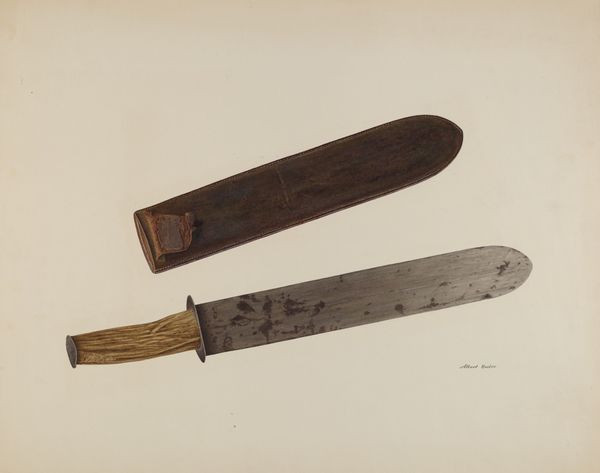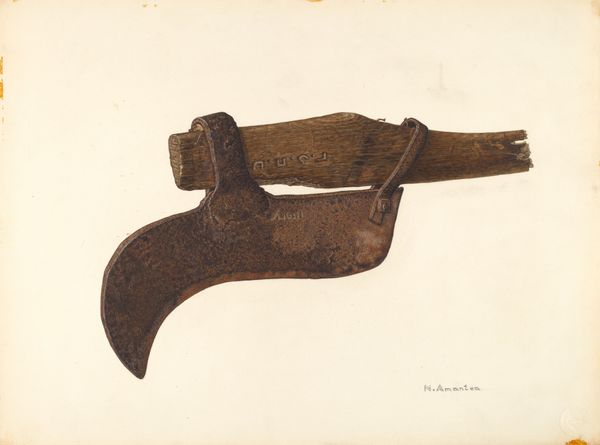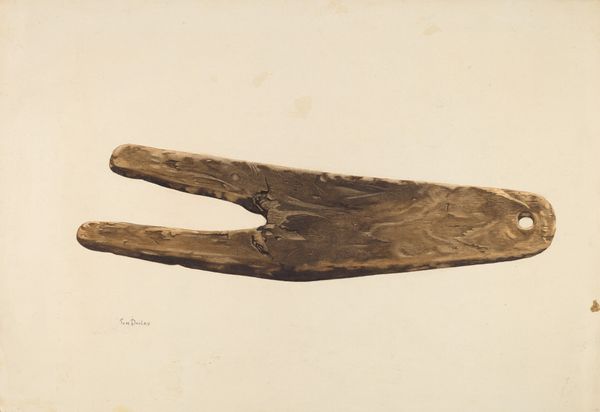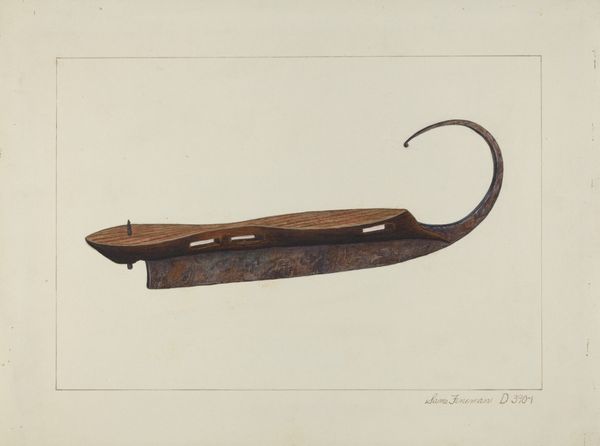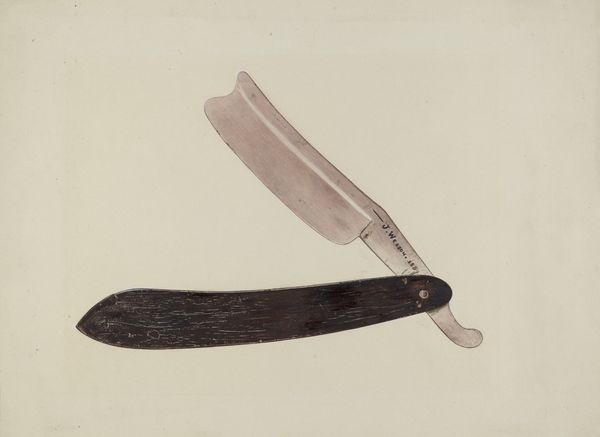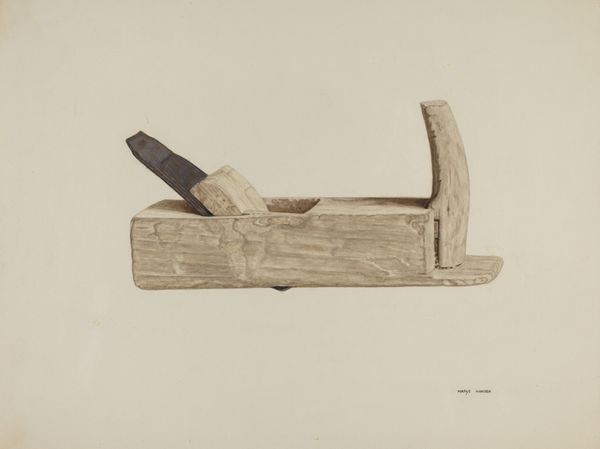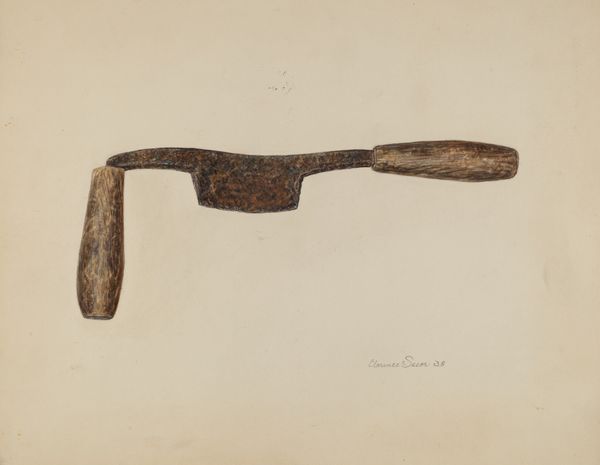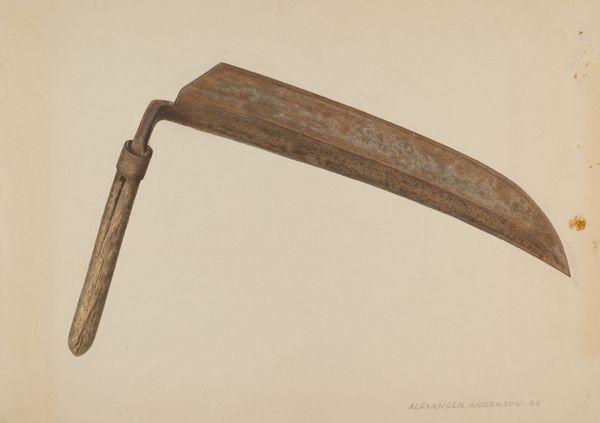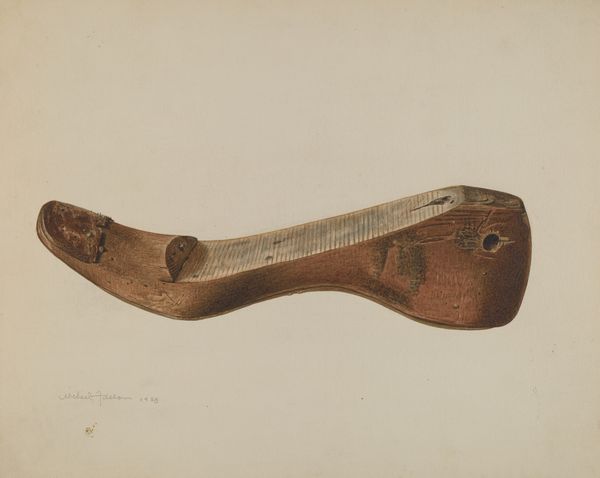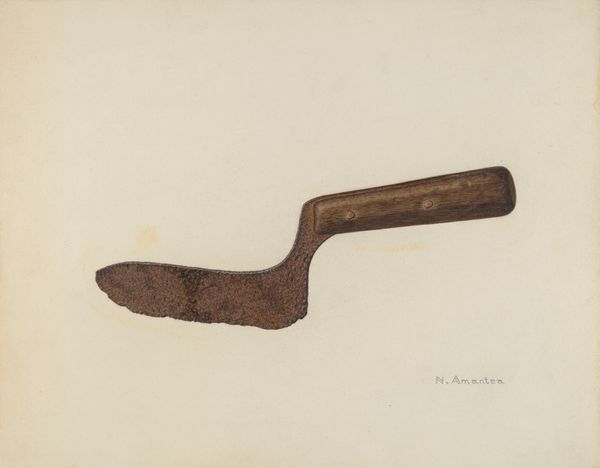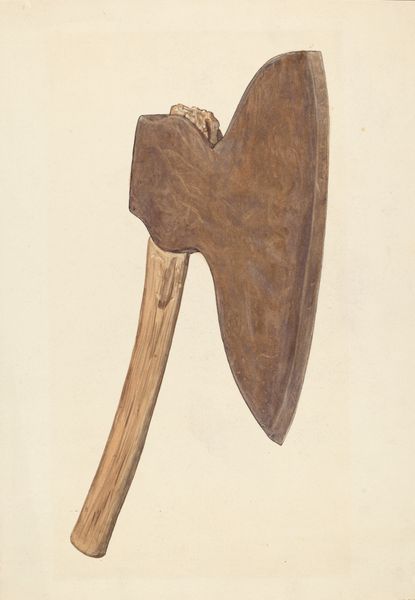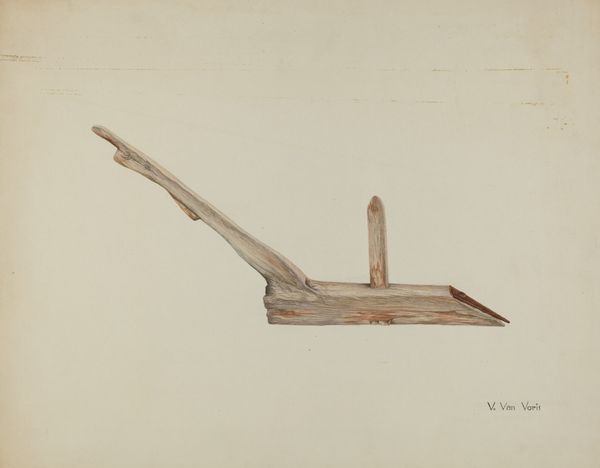
drawing, pencil, graphite
#
drawing
#
pencil drawing
#
pencil
#
graphite
#
graphite
#
realism
Dimensions: overall: 42.8 x 58 cm (16 7/8 x 22 13/16 in.)
Copyright: National Gallery of Art: CC0 1.0
Curator: I find Albert Rudin’s "Saw and Case," dating to around 1940, surprisingly poignant. It’s rendered in pencil and graphite. There’s a humble quality to the image that is somehow very affecting. Editor: Absolutely, a sense of worn simplicity prevails. My eye is drawn to the intricate shape of the wooden case – almost anthropomorphic with its rounded forms. There's an immediate feeling of protection and containment. Is it meant to mimic a cradle, perhaps? Curator: That’s an intriguing reading! In terms of context, consider the date. Created during the late Depression era, and on the cusp of World War II, the piece is a stark reflection of utility and basic tools—a turn away from excess. I see it speaking to resourcefulness. Editor: Yes, the iconography certainly supports that. Saws are traditionally associated with precision, labour, and construction but, given the potential historical context, this piece feels melancholic, as if honouring trades on the verge of disappearing. It’s imbued with the past. The tool’s case speaks of longevity, endurance and generational memory. Curator: The composition is deceptively simple, yet there’s a clear decision to elevate the subject. The solitary placement on the page also speaks to a kind of reverence for skilled labor, specifically manual work in that era. It feels like an acknowledgment of what keeps a community standing. Editor: And there is also the symbolic aspect related to what a saw actually *does*; it divides. So it is interesting to see such a divisive, violent object carefully housed. Is there perhaps an exploration of what can and cannot be contained? The blade, of course, is on display... Curator: That offers such a useful perspective – I had missed that darker current within the overall composition. This opens it up to reflect broader questions on craft and progress. Rudin compels us to engage with questions of how a society advances, especially with his selection of specific imagery that has multiple, deeply-rooted historical associations. Editor: Precisely, seeing those layers enriches the experience. It pushes us to rethink commonplace objects and consider our individual connections to collective narratives.
Comments
No comments
Be the first to comment and join the conversation on the ultimate creative platform.
